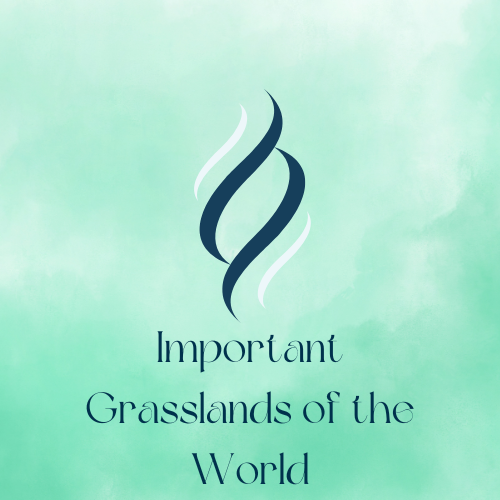Grasslands are large ecosystems with large areas of grasses and other herbaceous plants, with trees and shrubs spread here and there. These unique landscapes are very important for keeping biodiversity, helping animals survive, and offering important ecosystem services. In this piece, we’ll look at some of the world’s most important grasslands and talk about what they mean for the ecology of our planet.
A Brief Look at Grasslands
Table of Contents
Grasslands are large areas of land where grasses and other growing plants grow most of the time. They can be found on all continents except Antarctica, and they cover about 25% of the land area of the Earth. There are two main types of grasslands: cold grasslands, which have different seasons, and tropical grasslands, which have more stable weather.
Grasslands are known for having a lot of different kinds of plants and animals, and they do. They are important homes for animals, birds, snakes, and insects that graze. Also, grasslands help keep our earth healthy by storing carbon, filtering water, and stabilising the soil.
The Savanna in Africa
One of the most well-known grassland environments in the world is the African Savanna. It is a large area in Africa that includes Kenya, Tanzania, and South Africa. It is made up of wide open fields with acacia trees and is home to a huge variety of animals. The savanna is known for its big groups of herbivores like zebras, wildebeests, and elephants, as well as predators like lions, leopards, and cheetahs.
The prairie in North America
Once, the North American Prairie took up millions of square kilometres in the middle of the continent. It is a temperate grassland environment with a unique group of plants and animals living in it. Big bluestem, little bluestem, and switchgrass are some of the tall grasses that are found in the prairie. Some of the most well-known animals that live in this huge field are bison, prairie dogs, and pronghorns.
The steppe in Eurasia
The Eurasian Steppe is a huge farmland that stretches from Eastern Europe to Mongolia. It is one of the biggest grassland ecosystems that go on for a long time. The steppe has a flat landscape and is home to many different kinds of plants and animals. Nomadic groups like the Mongols used the grasslands to feed their animals and did well in this area in the past.
The Rangelands of Australia
The Australian Rangelands cover a large part of the continent of Australia. This ecosystem of dry to semi-dry grasslands is home to unique plants and animals that have learned to live in harsh circumstances. Some of the most well-known species that live in these fields are kangaroos, emus, and different kinds of reptiles. Aboriginal people have lived in peace with this land for thousands of years, so the Rangelands are also important to them culturally.
The Pampas of South America
The Pampas are large fields in South America. They are in Argentina and Uruguay. These fertile areas are known for how well they work for farming, especially for raising cattle. The Pampas are also important places for many kinds of birds to live, like flamingos and rheas.
The area on top of Tibet
People often call the Tibetan Plateau the “Roof of the World.” It is a unique environment of grasslands that is high up in the Himalayas. The area is cold and dry, but there are many different kinds of plants and animals that live there. Tibetan antelopes, wild yaks, and many different kinds of birds have learned to live in this harsh environment.
The Arctic Steppe
The Arctic Tundra is a grassland with no trees that covers Alaska, Canada, Greenland, and Siberia, which are all in the far north of the world. It is a fragile environment because it gets cold and the growing season is short. Even though the arctic is a harsh place to live, it is home to hardy plants like mosses and lichens, as well as unique animals like reindeer, musk oxen, and Arctic foxes.
How important grasslands are
Grasslands are very important to the health of our world as a whole. They help to store carbon, which helps to slow down climate change. Grass’s deep root systems help keep the soil stable and stop it from washing away. Grasslands also filter water naturally by letting rainwater soak into the soil and fill up underground water stores.
Also, grasslands are important for many plant and animal types to stay alive. They give places for animals to graze and places for predators to hunt. Grasslands are important places for many migratory bird species to stop on their long trips.
Efforts to save nature
Grasslands are in danger all over the world because of things like the spread of farming, the growth of cities, and climate change. Conservation activities are very important to protect these important ecosystems. For grasslands to be around for a long time, we need to do things like set up protected areas, use sustainable land management practises, and educate the people about their value.
Conclusion
Grasslands are not just big areas of grass; they are also complex environments that are home to a huge variety of life. From the African Savanna to the Arctic Tundra, these grassland habitats are very important for maintaining biodiversity, regulating our climate, and providing key ecosystem services. By knowing and understanding how important grasslands are, we can work to protect them and make sure our world has a good future.
FAQs
Can you only find fields in remote places?
A: No, meadows are not just in the countryside. They can be found in both rural and urban areas around the world.
What kinds of things could hurt grassy ecosystems?
A: Some of the biggest risks to grasslands are turning them into farms, overgrazing, invasive species, and climate change.
How important are fields to the economy?
A: Yes, meadows are important to the economy for farming, letting animals graze, and ecotourism.
Can fields get better after being damaged?
A: Degraded grasslands can be brought back to their former health and productivity with the right kind of management and repair work.
How can a single person help protect grasslands?
A: People can help protect grasslands by managing their land in a healthy way, giving money to local conservation groups, and spreading the word about how important these ecosystems are.

I’m a student. I like writing about famous people. I will cover biography of all the latest and trending people world wide. Stay tuned with me on Biographyly.com. Don’t forget to share our contents with your friends.





